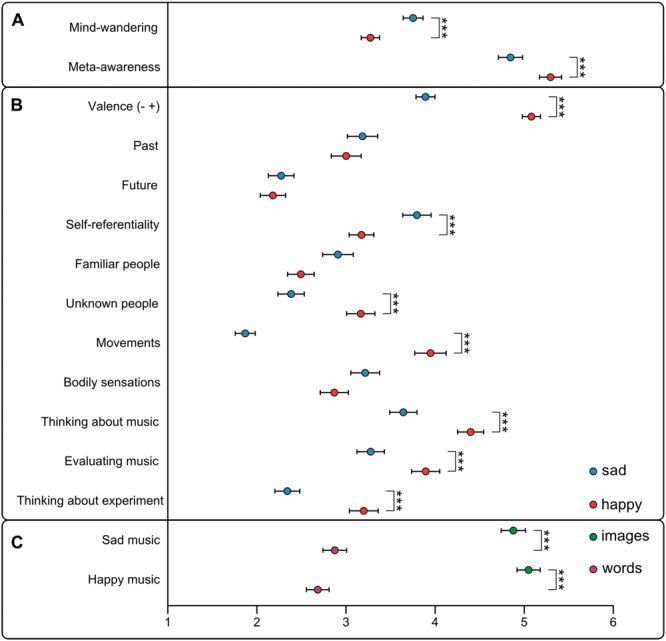Figure 1.

Differences in the strength of mind-wandering and its phenomenological dimensions between experimental conditions (sad and happy music). Mean ratings (± SEM) of each item featured in the thought probes are shown (answer scales 1–7; see Table S1 for precise questions). ***P ≤ 0.001, valence (− + ) = negative/positive valence. (A) Significantly stronger mind-wandering and significantly less meta-awareness were observed during sad (compared with happy) music (P-values are one-tailed). (B) During sad (compared with happy) music, thoughts were significantly more self-referential. By contrast, during happy (compared with sad) music, thoughts were significantly more focused on positive content, movements, unknown people, music, and experiment. (C) During both sad and happy music, thoughts occurred significantly more in the form of images compared with words.
